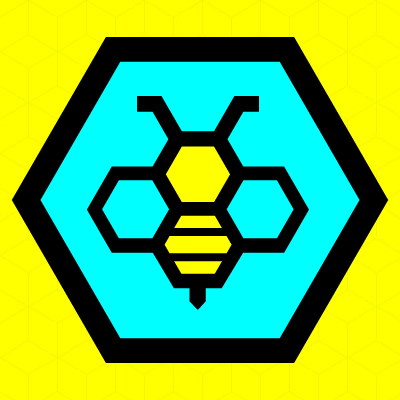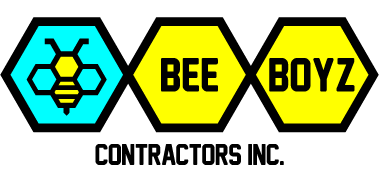Types of Bees in South Florida
If you see or want to learn more about the following types of bees in South Florida call a professional bee removal and relocation expert. Learn about their appearance, behavior, and common hive and nest locations.
CAUTION: Please do not attempt to remove or kill the hive or nest yourself. Even otherwise docile bees can become aggressive when disturbed or threatened.
Honeybees
Appearance: Honeybees are golden-brown and fuzzy with dark brown or black bands surrounding the abdomen.
Behavior: They travel in large swarms and are especially visible when establishing a new colony. Honeybees are generally tame, but will attack if you disturb their nest or provoke them.
Common Hive Locations: Hives are made out of distinctly shaped honeycomb. They are found in walls, attics, and holes in trees. You can locate the hive if you observe the bees entering and leaving one specific spot.
Africanized Honeybees
Appearance: Africanized honeybees look nearly identical to European honeybees, but are slightly smaller.
Behavior: These bees are aggressive and often attack in swarms. They tend to be disturbed by vibrations from lawn equipment, as well as animals like large dogs or horses.
Common Hive Location: Africanized honeybees share the same hive locations as the honeybee.
Bumblebees
Appearance: Bumblebees are similar to honeybees in appearance, but are much larger and rounder. They are mostly black with small yellow or white bands behind their head and are very fuzzy.
Behavior: They are generally docile but can become extremely aggressive when disturbed.
Common Hive Locations: Bumblebees may nest in abandoned rodent burrows in the ground or in trees, but are especially present around untrimmed palm tree crowns.
Wasps
Appearance: Wasps are longer and thinner than bees and come in many different colors. They can be very tiny or more than an inch in length.
Behavior: Wasps are very aggressive if disturbed. Commercial wasp spray may further aggravate them.
Common Nest Locations: Wasps often make nests under soffits and eaves, around fences, and in enclosed places like sheds.
Mud Daubers
Appearance: Mud daubers look similar to wasps but are dark blue or black.
Behavior: They are not aggressive, but can still be a nuisance if the nest is in an inconvenient place.
Common Nest Locations: You can identify mud daubers by their large, dark gray or brown nests made of mud. You can typically find nests in corners and under soffits, often near water.
Yellow Jackets
Appearance: Yellow jackets are smaller than most other types of bees and wasps and get their name from their bright yellow bodies streaked with black bands.
Behavior: These insects are easily disturbed by vibrations, such as those from a lawnmower, and do not like people or animals coming close to their hidden nests. They are aggressive and may sting multiple times.
Common Nest Locations: Yellow jackets can be a hazard to anyone who does yard work in overgrown areas, as they commonly nest in the ground. You may be able to spot a yellow jacket nest if you notice them flying to and from a spot on the ground in consistent patterns.
Carpenter Bees
Appearance: Carpenter bees are similar in size to bumblebees and share the same fuzzy exterior, although their colors tend to be darker black, metallic blue, or dark green.
Behavior: Carpenter bees tend to have erratic flight patterns. They are fairly docile and usually do not sting, but females may if provoked.
Common Nest Locations: These bees get their name from their nesting habit of chewing holes into untreated and unpainted wood. You can find their nests in fascia board, although the smaller species of carpenter bee may bore holes into tree limbs.
Any of these bees can become dangerous if threatened; let us remove them for you. Call Bee Boyz Contractors for professional bee removal and relocation services in the Fort Lauderdale area today: 954-483-5533.

